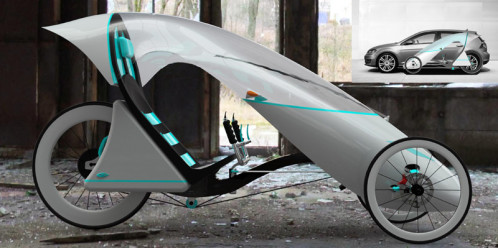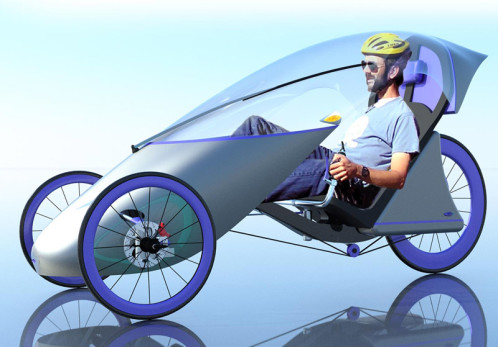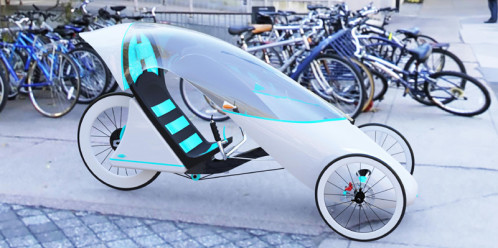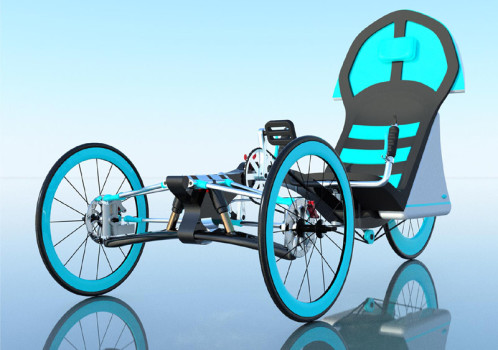 George Cooper is a recent Industrial Design graduate from the UK. For his final school project, he set out to design a human powered vehicle geared toward the majority of people who don’t currently cycle (that blue ocean that is mentioned here from time to time). His solution is an electric assist recumbent tricycle with a half fairing for aerodynamics and weather protection. His design also features “lights, panniers, disc brakes, gears, front wishbone suspension (with lean angle), wipers, under-seat steering, adjustable pedals and it doesn’t require any licensing or insurance.”
George Cooper is a recent Industrial Design graduate from the UK. For his final school project, he set out to design a human powered vehicle geared toward the majority of people who don’t currently cycle (that blue ocean that is mentioned here from time to time). His solution is an electric assist recumbent tricycle with a half fairing for aerodynamics and weather protection. His design also features “lights, panniers, disc brakes, gears, front wishbone suspension (with lean angle), wipers, under-seat steering, adjustable pedals and it doesn’t require any licensing or insurance.”

To better explain the concept, read George’s full summary of the project below:
“In the UK today there are three major concerns which are always being addressed in the media: money, health and the environment. This project sets out to design and manufacture a product which can appease each of these issues.
My initial research showed that a new form of human powered vehicle could be designed to encourage more people to cycle. This would benefit the rider’s health and financial situation while at the same time improving the environment by reducing pollution and the consumption of finite resources.
The aims of the project are to help those not accustomed to cycling, those with physical problems and enable them and many others to take up cycling. The project also set out to solve some of the current disadvantages of cycling and improve the comfort of human powered transport.
The product has delivered these requirements. I designed a motor assisted partially enclosed trike. The motor enables longer distances to be travelled with less effort from the user. The recumbent position is the most efficient method of pedaling which makes the E-trike efficient and comfortable for use by anyone. The half shell protects the user from the elements and the third wheel improves stability. It has a stylish, modern and clean appearance making it attractive and desirable. Other noticeable improvements such as storage and lighting have been incorporated into the design making the E-trike not only user friendly and efficient but also practical for daily use.
The E-Trike shares many of the advantages of the car but produces zero emissions. All these factors combine to produce a new elegant form of transport which incorporates into a healthy lifestyle. It aims to change the views of cycling and produce a society with better health, more money and greener attitudes towards the environment.”



Leave a Reply